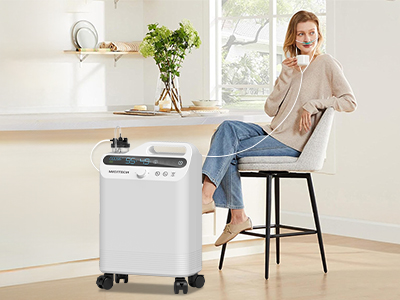03 Nov 2025
If your furry companion has been panting like they just ran a marathon—while merely standing still—it might be time to talk about something rather unexpected: oxygen therapy. Yes, oxygen therapy isn’t just for humans in hospital gowns. It’s finding its way into the world of wagging tails and twitching whiskers. Because sometimes, a good sniff of concentrated air is exactly what the vet ordered.

When Fido’s Breath Sounds Like a Wind Instrument
Pets, much like people, rely on oxygen for every wag, purr, and leap off the couch. When their lungs or heart aren’t quite pulling their weight, you might notice signs—subtle at first, dramatic later. That adorable snooze? It’s now punctuated with labored breathing. The playful chase? Replaced by a reluctant shuffle.
Dogs with congestive heart failure, cats with asthma, or even older rabbits with respiratory infections can all benefit from supplemental oxygen. It’s like giving their tiny bodies an energy boost without the caffeine crash. When their blood oxygen dips too low, their organs stage a silent protest. Oxygen therapy swoops in like the superhero of the pulmonary world—cape not included.
Signs Your Pet May Need a Little Extra Air
Animals are notoriously stoic. They can hide discomfort better than a poker champion hides a royal flush. But a watchful eye can spot the clues:
Rapid or shallow breathing, even at rest.
Bluish gums or tongue (yes, it’s as worrying as it sounds).
Reluctance to move, eat, or do their usual zoomies.
Constant panting, even when the temperature’s fine.
If you’ve found yourself asking, “Why does my dog look like he’s training for a marathon indoors?”—it’s time to talk to the vet.
The Science Behind the Sniff
Here’s where it gets interesting. Oxygen therapy works by increasing the concentration of oxygen your pet inhales, ensuring their bloodstream gets more of the good stuff. When their lungs are struggling—whether from pneumonia, injury, or chronic disease—the therapy lightens the load.
Veterinarians use special oxygen cages or masks that allow your pet to breathe more efficiently. It’s painless, non-invasive, and oddly serene. Cats often emerge looking both offended and refreshed—like they’ve just been to a very posh spa against their will.

Bringing Oxygen Therapy Home
For pets with ongoing conditions, home oxygen therapy can be a game-changer. Portable oxygen concentrators or veterinary oxygen chambers allow you to create a mini oxygen haven right in your living room.
Imagine: your dog lounging in a cozy enclosure, serenely inhaling the purest air this side of the Himalayas. Meanwhile, you’re nearby with a cup of tea, feeling like you’re running a boutique wellness retreat for animals.
Of course, it’s not a DIY project. Your vet will help determine the right flow rate, duration, and setup—because too much of a good thing can turn your well-intentioned spa session into a respiratory rave.
The Emotional Side of Oxygen Therapy
It’s not just about oxygen levels—it’s about quality of life. Watching your pet breathe comfortably again is like witnessing a small miracle. The energy returns to their eyes, tails wag with purpose, and purrs once again vibrate through the room like soft jazz.
The Bottom Line: Breathe Easier, Together
Oxygen therapy isn’t a one-size-fits-all solution, but for pets struggling to draw breath, it can be transformative. Whether temporary support after surgery or long-term management for chronic illness, the benefits are tangible—and deeply heartwarming.
So, if your beloved creature has been puffing more than prancing, don’t ignore the signs. Consult your vet, explore the options, and prepare to give your pet the gift of effortless breathing. After all, every bark, meow, chirp, and cuddle deserves a healthy breath behind it.
Keywords: Oxygen Therapy
Originally published 03 Nov 2025, updated 03 Nov 2025.